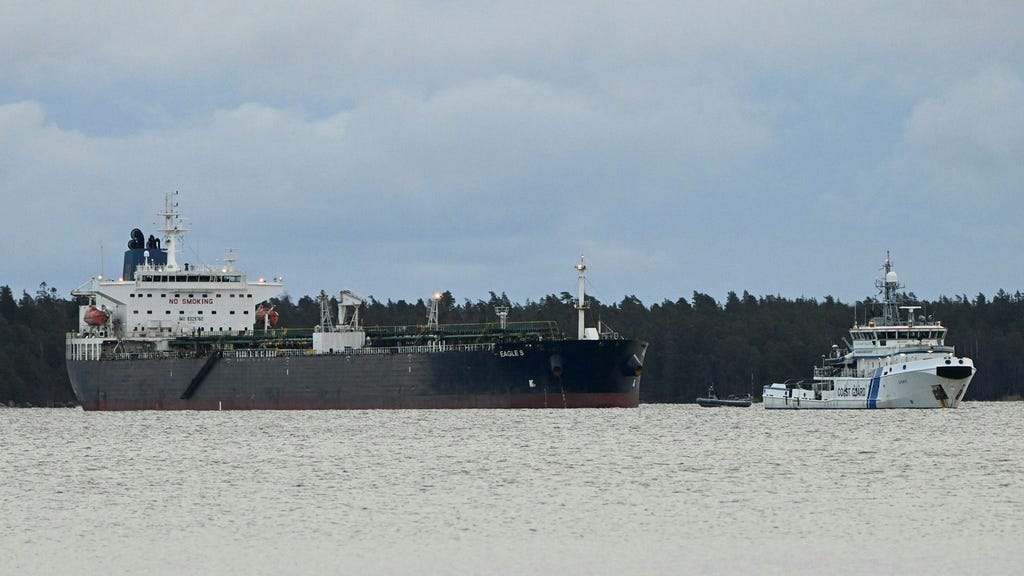The swift and decisive operation to seize the vessel Eagle S in the Gulf of Finland on Boxing Day showcased the Finnish authorities’ preparedness and inter-agency cooperation in responding to potential threats to critical infrastructure. The operation, involving the elite Bear Squad of the Finnish police, alongside specialized units of the Finnish Coast Guard, successfully apprehended approximately twenty individuals aboard the unregistered vessel suspected of sabotaging undersea cables. This marked the first time since World War II that Finland had undertaken such a complex maritime security operation, highlighting the evolving security landscape and the nation’s readiness to address emerging challenges.
The operation was meticulously planned and executed, demonstrating the effectiveness of long-term training and inter-agency drills. Harri Gustafsberg, a retired member of the Bear Squad, emphasized the importance of rigorous preparation, stating that such maneuvers require extensive training to ensure immediate and effective response when the need arises. This preparedness allowed the Finnish authorities to act swiftly and decisively, mobilizing resources and coordinating efforts seamlessly across multiple agencies. The operation underscores the value of preemptive training and the development of robust protocols for handling complex security situations.
The timeline of events reveals the coordinated nature of the response. The power grid operator, Finngrid, alerted the Coast Guard to the severed undersea cable, triggering a chain of communication that swiftly escalated to the highest levels of government. Within hours, the police initiated a special operation, mobilizing the Bear Squad while simultaneously informing President Sauli Niinistö and Prime Minister Petteri Orpo. The Coast Guard dispatched a patrol vessel to monitor the Eagle S, observing its suspicious anchoring behavior, which indicated a potential threat to other undersea cables. This prompt action prevented further damage to critical infrastructure and enabled the authorities to intercept the vessel before it could inflict further harm.
The operation itself was a remarkable display of tactical precision. Elite forces, transported by helicopter and heavily armed, were deployed onto the deck of the Eagle S under the cover of darkness, illuminated by spotlights. The success of this maneuver was partly attributed to the favorable weather conditions, highlighting the importance of situational awareness and adaptability in such operations. The captain of the Eagle S complied with the orders from the Finnish Coast Guard, steering the vessel into Finnish territorial waters, which significantly streamlined the boarding process. This cooperative action facilitated a swift and controlled transfer of authority, minimizing the risk of escalation or confrontation.
The incident echoes a previous operation in 2018, where Finnish authorities demonstrated a similar coordinated approach involving the police, Coast Guard, and defense forces in the seizure of a Russian oligarch’s properties in Pargas. This consistent pattern of inter-agency cooperation underscores Finland’s commitment to upholding the rule of law and protecting its national interests. While the Kremlin has remained tight-lipped about the Eagle S incident, dismissing it as a minor issue, the operation sends a clear message of resolve and deterrence. Finland has demonstrated its ability to respond effectively to potential threats and protect its critical infrastructure, sending a strong signal that such actions will not be tolerated.
The successful outcome of the Eagle S operation has generated widespread praise for the Finnish authorities, highlighting the importance of preparedness and inter-agency cooperation in maintaining national security. However, the incident also raises important legal questions about future responses to similar situations, particularly if a vessel refuses to enter territorial waters. The Finnish government is actively considering how to address these legal complexities, emphasizing the need for clear protocols and legal frameworks to enable swift and decisive action in international waters should similar incidents occur in the future. This proactive approach reflects Finland’s commitment to safeguarding its critical infrastructure and maintaining a strong security posture in an increasingly complex geopolitical environment.














